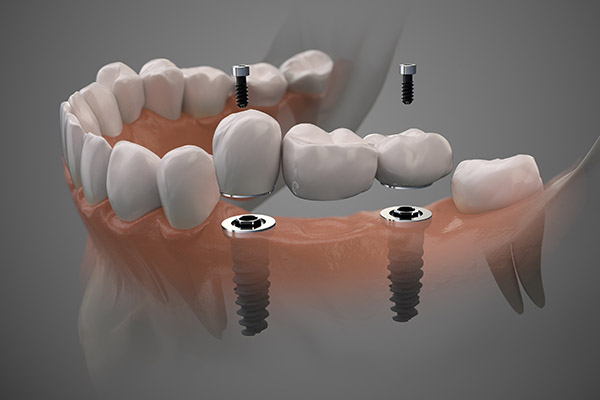 When searching for the most suitable option for replacing missing teeth, you might have come across an implant-supported bridge. So, what exactly is it, and why should you opt for it?
When searching for the most suitable option for replacing missing teeth, you might have come across an implant-supported bridge. So, what exactly is it, and why should you opt for it?
What are dental bridges?
A dental bridge is a long-term option for replacing missing teeth. It's made up of numerous components fused to fill the gap left by your missing tooth or teeth. They serve both functional and cosmetic objectives, allowing you to eat and speak more comfortably while also improving the appearance of your teeth.
The bridge might be composed of various materials, such as gold, alloys, or porcelain. Porcelain is the material of choice when replacing a front tooth since it may be color-matched to your natural teeth.
Implant-supported bridges
An implant-supported bridge is a tooth replacement that is permanently attached to dental implants. Depending on the patient's circumstances, the number of implants required to attach the bridge varies, but a common arrangement is two implants supporting three teeth: two "cap" teeth on either end bridged by another tooth in the middle. A fixed implant-supported bridge is a more cost-effective option than implanting and crowning each lost tooth separately. However, because of the implant procedure, it is more expensive than other detachable options. Your health and financial circumstances determine the therapy you pick to replace lost teeth.
Implant-supported bridge procedure
An implant-supported bridge requires numerous phases of therapy spaced out over a six- to nine-month period. First, dental implants are surgically implanted beneath the tooth loss location in the jaw. Next, the mouth must recover for several months after surgery. The bone tissues should integrate with the dental implants during this time, a process known as osseointegration.
The second step of therapy involves a more detailed process. The gums are opened, and abutment posts are affixed to the implants during this operation. Following this therapy, the gums will require additional time to recover.
The insertion of the dental bridge is the final stage of dental implant therapy. The dental bridge is attached to the abutment posts with a specific dental compound. This secures the dental bridge, allowing it to blend in with the rest of the smile.
Advantages
There are many advantages if you choose an implant-supported bridge for an option for replacing missing teeth:
- There will be no need to alter any of your natural teeth.
- An implant replaces the lost tooth and replaces the root of the missing tooth.
- The titanium implant encourages new bone tissue to form in your jaw.
Disadvantages
Implant-supported bridges have some disadvantages as well. For example, it takes longer to get implant-supported dental bridges than it does to get a regular bridge. Over many months, you'll need to attend multiple appointments. In addition, you may be ruled out as a candidate if you have specific medical issues, like low bone density in your jaw.
Related Posts
Partial dentures are one of the most cost-friendly and effective options for replacing missing teeth. They can either be removable or fixed dentures. This is a guide on what partial dentures are, their benefits, and how to care for them.Partial dentures, commonly known as partials, are artificial replacement teeth that replace a patient's missing teeth.…
Dental bridges are one of the most preferred options for replacing missing teeth. As the name suggests, dental bridges bridge the gaps left by one or more lost teeth. This is a guide to your dental bridge options, types, and benefits.A dental bridge is a prosthetic bridge that replaces one or more missing teeth. It…
Full mouth dental implants are a preferred option for replacing missing teeth teeth rather than getting dentures. Due to advancements in dental technology, it is now possible to replace all your teeth throughout your entire mouth with dental implants. Dental implants are an option that allows you to eat comfortably and smile with confidence. They…







